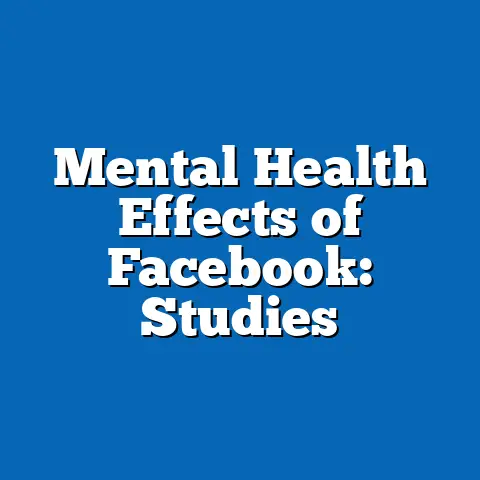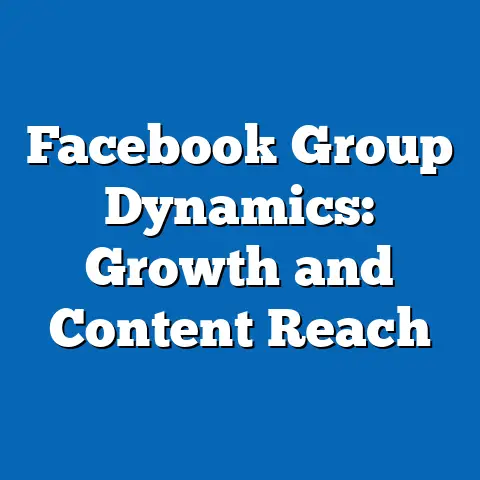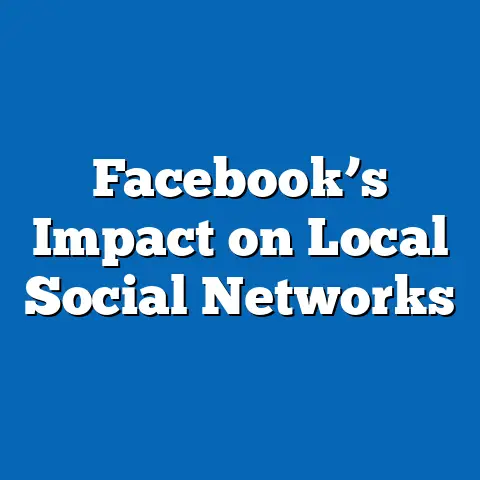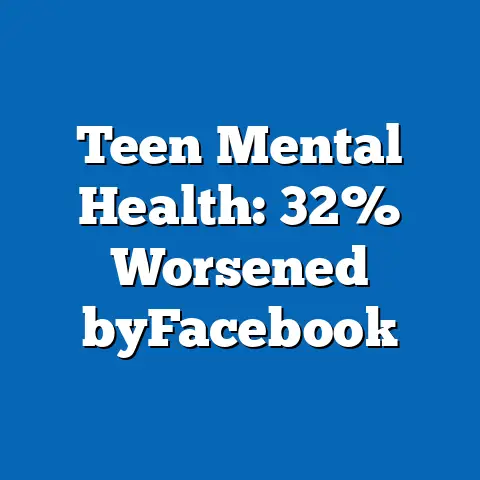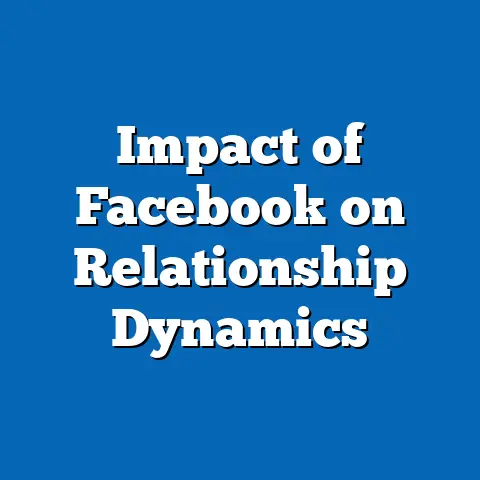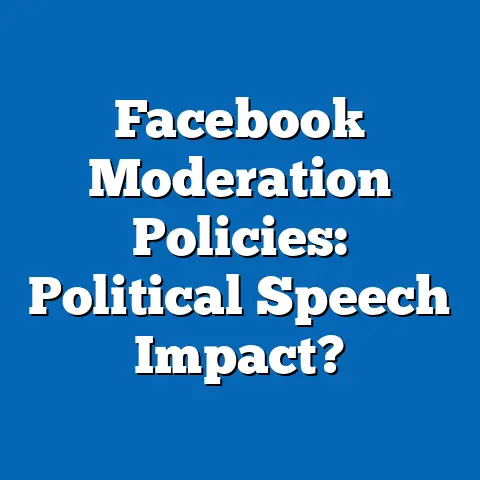Facebook Usage Trends in Gen Z vs. Boomers
Have you ever wondered how the platforms that connect billions of people worldwide are shaped by the unique behaviors and preferences of different generations? In the realm of social media, few platforms have had the enduring impact of Facebook, a digital giant that has evolved from a college networking site to a global communication hub. Yet, as technology and cultural norms shift, the ways in which different generations engage with Facebook reveal striking disparities—particularly between Generation Z (born 1997–2012) and Baby Boomers (born 1946–1964).
Defining the Generations and Key Concepts
Before diving into the data, it is essential to define the generational cohorts under study. Generation Z (Gen Z) refers to individuals born between 1997 and 2012, often characterized as digital natives who grew up with smartphones and social media as integral parts of their lives. Baby Boomers (Boomers), born between 1946 and 1964, represent an older cohort that has adapted to digital technology later in life, often using it for different purposes than younger generations.
Facebook usage in this context refers to metrics such as daily active users (DAU), time spent on the platform, types of content engagement (e.g., posting, liking, commenting), and overall platform adoption rates. These metrics are critical for understanding not just presence on the platform, but the depth of interaction. This report also considers platform migration, the trend of users shifting to alternative social media platforms, and digital literacy, the ability to effectively use digital tools, as key variables influencing usage patterns.
Current Data on Facebook Usage: Gen Z vs. Boomers
Gen Z: Declining Engagement
Recent data highlights a marked decline in Facebook usage among Gen Z. According to a 2023 report by Pew Research Center, only 32% of U.S. teens aged 13–17 use Facebook regularly, a sharp drop from 71% in 2015. This trend is echoed globally, with eMarketer estimating that Gen Z users in North America and Western Europe are increasingly abandoning the platform, with a projected loss of 1.2 million users in this demographic by 2025.
Engagement metrics further underscore this shift. Gen Z users spend an average of 15 minutes per day on Facebook, compared to over 30 minutes on platforms like Instagram and TikTok (Statista, 2023). Content creation and interaction are also minimal, with many Gen Z users maintaining accounts primarily for family connections or event planning rather than active participation.
Boomers: Sustained and Growing Presence
In contrast, Baby Boomers represent a growing segment of Facebook’s user base. A 2022 study by the AARP found that 70% of U.S. adults aged 50–64 and 48% of those over 65 use Facebook, with many logging in daily. Globally, Boomers account for a significant portion of the platform’s 2.9 billion monthly active users, with usage rates climbing by 5% annually in this age group (Meta, 2023).
Boomers also exhibit high engagement, spending an average of 45 minutes per day on the platform and actively participating in groups, sharing news articles, and commenting on posts (Statista, 2023). This sustained presence suggests that Facebook remains a primary digital communication tool for older adults, often serving as a hub for social connection and information sharing.
Visual Representation of Current Usage
To illustrate these disparities, the following chart compares the percentage of each generation using Facebook regularly and their average daily time spent on the platform in 2023.
Chart 1: Facebook Usage by Generation (2023)
– Gen Z (13–26 years): 32% regular usage, 15 minutes/day
– Boomers (59–77 years): 65% regular usage, 45 minutes/day
(Data Source: Pew Research Center, Statista, 2023)
This stark contrast sets the stage for exploring future trends and the factors driving these differences.
Projected Trends: Statistical Modeling and Scenarios
Methodology and Assumptions
To project future Facebook usage trends for Gen Z and Boomers, this analysis employs a time-series forecasting model based on historical data from 2015 to 2023, supplemented by demographic growth projections from the United Nations Population Division. The model assumes that current rates of platform adoption, abandonment, and engagement will continue unless influenced by external factors such as technological innovation or policy changes. Limitations include the unpredictability of new social media platforms and potential shifts in user behavior due to unforeseen cultural or economic events.
Three scenarios are considered: (1) a baseline scenario assuming current trends persist, (2) an optimistic scenario where Facebook adapts to retain Gen Z users, and (3) a pessimistic scenario where platform migration accelerates across all age groups. Projections extend to 2030, with uncertainty acknowledged in long-term forecasts.
Scenario 1: Baseline – Continued Divergence
Under the baseline scenario, Gen Z usage of Facebook is projected to decline to 20% by 2030, with daily active users in this demographic dropping by 40% from current levels (eMarketer projections, adjusted). Time spent on the platform may fall to under 10 minutes per day as alternative platforms like TikTok and Snapchat dominate. Conversely, Boomer usage is expected to stabilize at around 70% of the cohort, with slight growth in developing regions where internet access continues to expand among older adults.
Scenario 2: Optimistic – Facebook Reinvention
In an optimistic scenario, Facebook could implement features targeting Gen Z preferences, such as enhanced short-form video content or gamification elements. If successful, usage among Gen Z could stabilize at 40% by 2030, with engagement time increasing to 20 minutes per day. Boomer usage would remain steady, potentially reaching 75% as the platform retains its role as a primary social hub for older adults.
Scenario 3: Pessimistic – Accelerated Decline
In a pessimistic scenario, privacy concerns, competition from emerging platforms, and cultural shifts could accelerate platform migration. Gen Z usage might plummet to 10% by 2030, with even Boomers reducing engagement to 50% as they adopt alternatives like WhatsApp for communication. This scenario assumes a failure to innovate and a broader decline in trust in Meta’s ecosystem.
Visual Representation of Projections
Chart 2: Projected Facebook Usage by Generation (2023–2030)
– Gen Z Baseline: 32% (2023) to 20% (2030)
– Gen Z Optimistic: 32% to 40%
– Gen Z Pessimistic: 32% to 10%
– Boomers Baseline: 65% to 70%
– Boomers Optimistic: 65% to 75%
– Boomers Pessimistic: 65% to 50%
(Data Source: Author’s projections based on eMarketer and UN data)
These scenarios highlight the range of possibilities and the critical role of strategic adaptation in shaping Facebook’s future user base.
Key Factors Driving Changes in Usage
Technological Preferences and Platform Design
Gen Z’s preference for visually dynamic, short-form content platforms like TikTok and Snapchat contrasts with Facebook’s traditional focus on text-based updates and long-form content. This mismatch drives younger users away, as they seek instant gratification and trend-driven interactions. Boomers, however, find Facebook’s interface familiar and accessible, aligning with their digital literacy levels and communication needs.
Social and Cultural Norms
Cultural shifts also play a significant role. Gen Z often views Facebook as outdated or associated with older generations, a perception reinforced by its use for family connections rather than peer interaction (Pew Research, 2023). Boomers, on the other hand, value the platform for maintaining relationships and accessing news, reflecting a generational emphasis on stability over novelty.
Privacy and Trust Issues
Privacy concerns disproportionately affect Gen Z, who are more aware of data security risks following high-profile scandals involving Meta. A 2022 survey by Morning Consult found that 60% of Gen Z users express distrust in Facebook’s data practices, compared to only 35% of Boomers. This disparity contributes to platform migration among younger users, while Boomers remain less deterred.
Economic and Access Factors
Economic factors, such as access to technology, also influence usage. Boomers in developed regions have greater disposable income to invest in devices and internet plans, facilitating consistent engagement. In contrast, Gen Z users in emerging markets may face access barriers, though this is less of a factor in driving usage trends compared to preference shifts.
Broader Historical and Social Context
The generational divide in Facebook usage reflects broader trends in digital adoption and societal change. When Facebook launched in 2004, it catered to a young, tech-savvy audience, aligning with the early internet era’s focus on novelty and connectivity. As the platform matured, it became a staple for older generations seeking to bridge physical distances, particularly during events like the COVID-19 pandemic, which saw a 12% spike in Boomer usage (Meta, 2021).
Gen Z’s disengagement mirrors historical patterns of youth-driven innovation, where each generation seeks platforms that reflect its values—much like Millennials flocked to MySpace in the early 2000s before transitioning to Facebook. This cyclical nature of platform adoption suggests that Facebook’s challenge lies not just in retaining users, but in redefining its cultural relevance across generations. Additionally, the rise of misinformation and political polarization on the platform has disproportionately alienated younger users, who prioritize authenticity and community over broad connectivity (Pew Research, 2023).
Limitations and Uncertainties
While this analysis draws on robust data and modeling, several limitations must be acknowledged. First, user behavior is inherently unpredictable, and sudden technological or cultural shifts could invalidate projections. Second, data on Gen Z usage may underrepresent certain subgroups, particularly in developing regions where access is inconsistent.
Third, self-reported usage statistics (e.g., Pew surveys) may contain biases, as users might over- or under-report engagement. Finally, the impact of Meta’s strategic decisions—such as potential pivots to the metaverse or enhanced privacy features—remains uncertain and could significantly alter trends. These limitations underscore the importance of interpreting projections as possibilities rather than certainties.
Implications for Facebook and Beyond
The generational divergence in Facebook usage has profound implications for the platform’s future. For Meta, retaining Gen Z may require substantial reinvention, focusing on trends like short-form video and enhanced user control over data. Failure to adapt risks ceding market share to competitors, potentially relegating Facebook to a niche platform for older users by 2030.
For Boomers, Facebook’s role as a digital lifeline suggests sustained relevance, particularly as aging populations seek connection in an increasingly isolated world. However, even this demographic could shift if trust erodes or if alternative platforms offer superior accessibility. Beyond Facebook, these trends highlight the broader challenge of designing technology that spans generational divides—a critical consideration for policymakers, businesses, and social researchers alike.
Conclusion: Navigating a Generational Crossroads
Facebook stands at a generational crossroads, with Gen Z’s waning interest and Boomers’ steadfast engagement painting a complex picture of its future. Current data reveals a clear divide, with projections suggesting that without strategic adaptation, this gap will widen by 2030. Factors such as technological preferences, cultural norms, and privacy concerns drive these trends, reflecting deeper societal shifts in how we connect and communicate.
While uncertainties remain, this analysis offers a framework for understanding the dynamics at play and the potential paths forward. As digital landscapes evolve, the challenge for platforms like Facebook lies in balancing innovation with accessibility—a task that will shape not just their user base, but the very nature of online interaction in the decades to come. Future research should focus on longitudinal studies of user behavior and the impact of emerging technologies to refine these projections and inform strategic responses.

